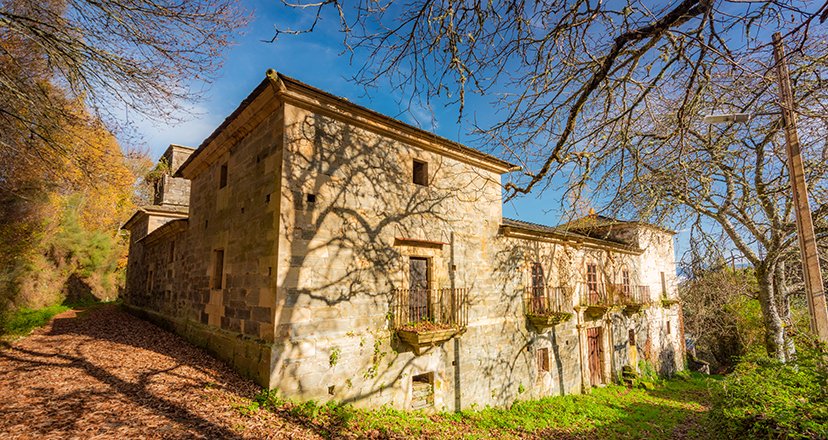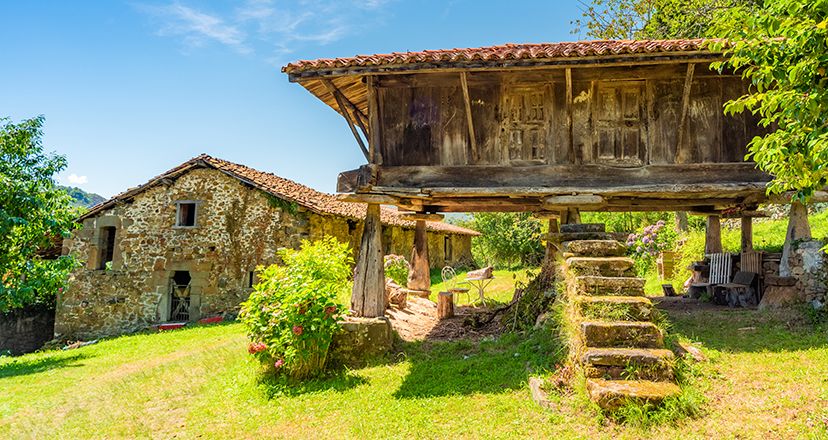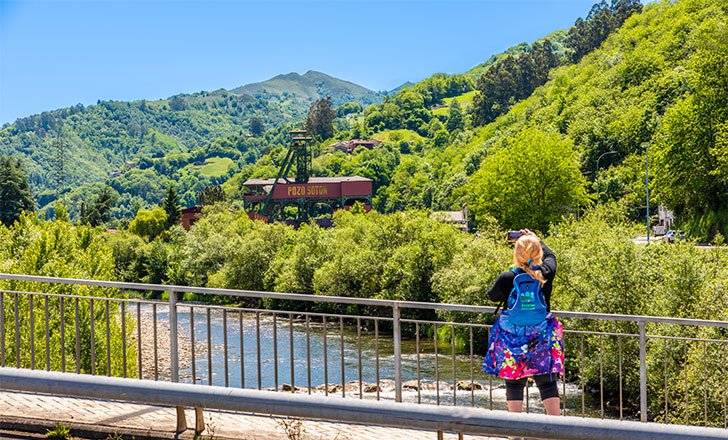Back Ethnographic routes to discover rural Asturias
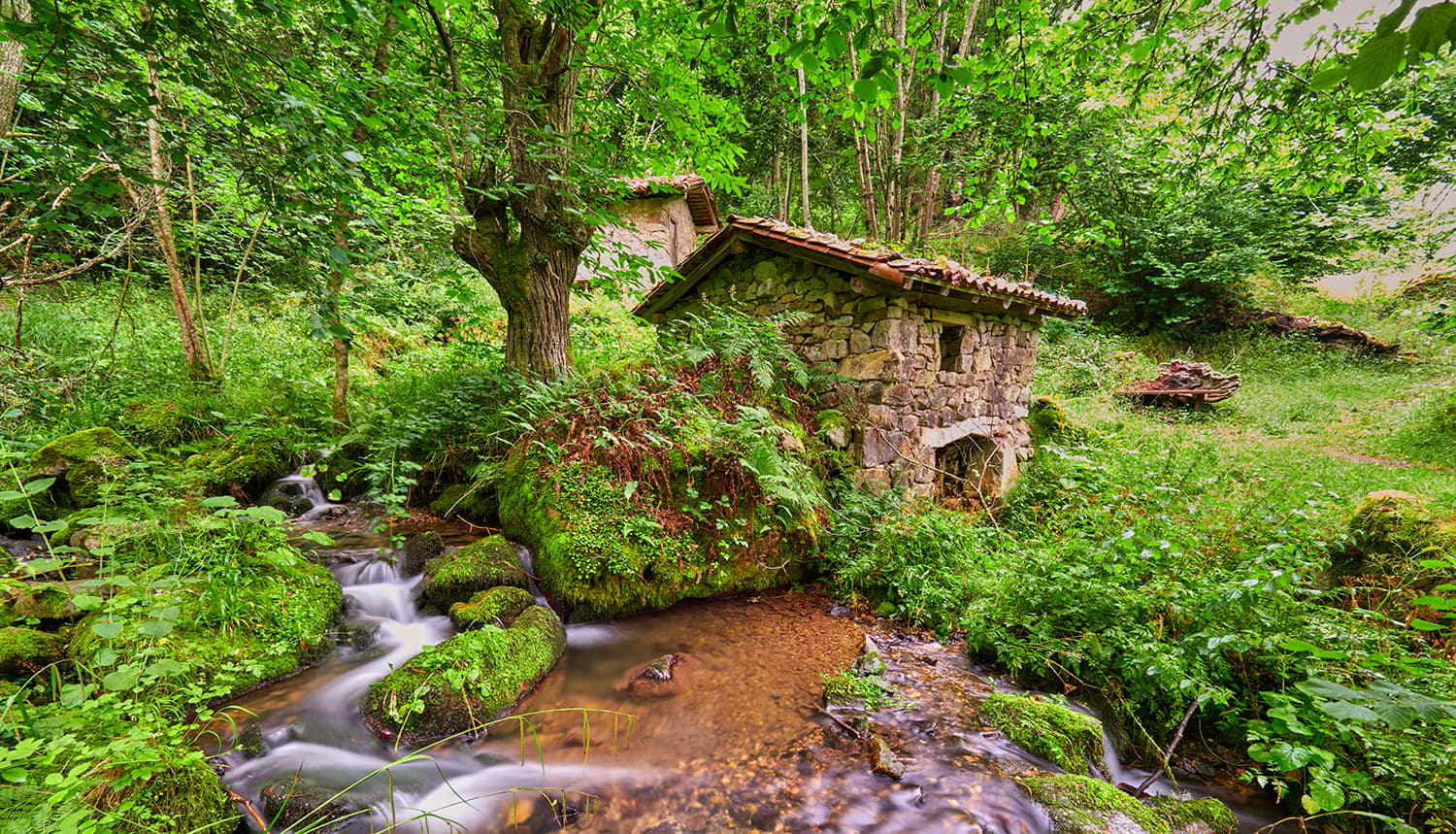
The best ethnographic routes to discover rural Asturias
Asturias is a land of deep-rooted customs, rich in cultural and natural heritage, and the ethnographic routes allow visitors to delve into the traditional life of its villages. These routes show us how people lived and worked in the past, exploring trades, traditional architecture and customs that have defined who we are today. From open-air museums to preserved villages, these routes offer a unique cultural tourism experience to connect with the living history and tradition of Asturias and better understand our identity.
A stroll through Bueño/Güeñu and the Hórreo Museum
Bueño/Güeñu is a charming village in the council of Ribera de Arriba, famous for housing one of the largest groups of hórreos and paneras in Asturias. This important heritage, with hórreos dating from the 16th and 20th centuries, has been preserved in magnificent condition. Its streets retain their rural charm and its proximity to the Asturian capital makes it a perfect place to combine with a visit to Oviedo/Uvieu.

To discover this valuable ethnographic site , it is advisable to follow the interpreted ethnographic route. By means of signposting and information panels, this route allows visitors to enjoy Asturian cultural heritage in a privileged natural setting.
The Hórreo Interpretation Centre is an obligatory stop in Bueño/Güeñu. The centre offers a detailed view of the enormous importance of hórreos in Asturian rural life. Through a pleasant and rigorous tour, visitors can discover the different types of hórreos and their distribution, their function as granaries, as well as the parts and materials used in the construction of these long-lived structures. This educational space perfectly complements the visit to the village, allowing visitors to understand its rich architectural and cultural legacy.
Brieves: The village of stone arches
Brieves is a village in the west of Asturias, located in the council of Valdés, which has an interesting ethnographic heritage, with its characteristic stone arches that connect the houses with the hórreos (granaries). There are also several examples of hórreos and paneras superimposed on other structures, in order to make better use of the space underneath the hórreo or panera, generally used as a dwelling or stable. Another of the village's outstanding buildings is the Brieves Tower, a sturdy construction dating from the 16th century.

Near Brieves, the Paredes valley shines with its own light. It is a beautiful natural setting of great ethnographic value that is perfectly suited to slow travel. Here we find two megalithic monuments: the dolmen of Restiello, in the village of La Vega, and the menhir of Ovienes.
In the valley of Paredes we also find the Natural Monument of Hoces del Esva, an impressive natural site that can be explored on a highly recommended route of medium difficulty, which combines the PR.AS-1 and PR.AS-2 short-distance footpaths, walking through a spectacular canyon and riverside woods.
Ethnographic Museum of Quirós and the Route of the mills of Corroriu
Quirós is a council with an outstanding natural, industrial and ethnographic heritage. To delve deeper into its industrial and ethnographic heritage, there is nothing better than a visit to the Ethnographic Museum of Quirós, located on the site of an old iron and steel complex, abandoned at the beginning of the 20th century.
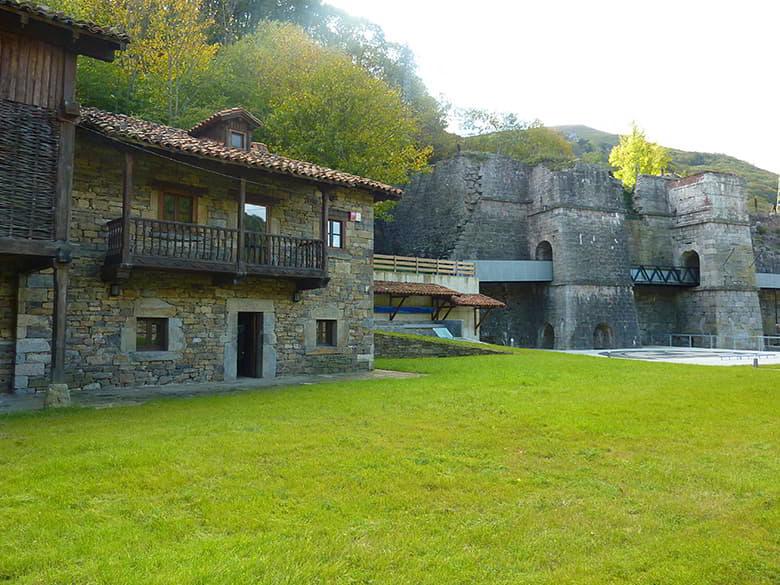
This museum is divided into two thematic blocks. On the one hand, Quirós Industrial traces the industrial history of the council, from the arrival of the first foreign entrepreneurs in the region, to the establishment and decline of mining and iron and steel industry. The exhibition is completed with a visit to the outer retaining wall, as well as the underground galleries where the machinery used to operate the blast furnaces was housed.
The other large section of the exhibition revolves around peasant life, through a tour located in a three-storey Asturian mansion, where visitors can learn more about traditional life in Quiroga. The museum is completed with traditional elements of Asturian villages: the hórreo (granary), the washing place and the school.
Near the museum we find the route of the mills of Corroriu - which illustrates our header photo -, a simple circular route that allows us to get to know another of the essential constructions in rural life: the river mill, essential for transforming grain into flour. The route is short and simple, suitable for everyone. It starts in the village of Vega de Arrojo and consists of a pleasant walk through chestnut woods in search of the three mills of Corroriu where, even today, spelt (a mountain cereal similar to wheat) is still milled.
Alejandro Casona Route (Bisuyu, Cangas del Narcea)
Alejandro Casona (1903-1965) was an outstanding playwright known for his ability to fuse realism and fantasy in his plays. Born in Bisuyu, Cangas del Narcea, Casona maintained a deep bond with Asturias, reflecting in his theatre the rural landscape and Asturian customs that marked his life and work.
The Alejandro Casona Route, in Bisuyu, is a guided tour of the birthplace of the famous playwright. The route begins at the Visitor Reception Centre in Besullo, a walk on which you can discover the life and work of his most famous neighbour, as well as the traditional architecture and the main ethnographic elements of Bisuyu, such as the recently restored Mazo d'Abaxo. The rural landscape that inspired many of his works accompanies the visitor, connecting his life with the Asturian environment that he loved so much.

The perfect complement to this route is the Pomar de las Montañas route, PR-AS 168, which starts in the village itself. It is a circular route of about 10 kilometres that connects with the semi-abandoned village of El Pumar.
Braña de Llanelo (Ibias) and Braña de Las Navariegas (Teverga)
The brañas are key elements for understanding rural life and shepherding in the Asturian mountains. They are settlements located in cool, high pastures, generally difficult to access and far from the population, where shepherds and herdsmen herded their livestock in the summer.
They lived there until the arrival of the cold weather, which is why they built huts whose style or architecture varies according to the area. Although, nowadays, many brañas are no longer in use, it is still possible to find examples of exceptional beauty hidden in the Asturian mountains.
One example is the beautiful Braña de las Navariegas, with well-maintained huts and several corros, circular stone structures with conical roofs, used to keep calves or pigs. Follow the PR-AS156 if you want to get here or if you feel like visiting this braña!
Another great option, and easier than the previous one, is to follow the PR-AS 9 route to reach the Llanelo hut in Ibias, located in a glacial excavation basin. The Llanelo hut is made up of a single hut and several trousas, circular or square enclosures, just over a metre high and without roofs, used to keep livestock.
Windmills of La Veiga (Pravia) and the route of the Mariners
There are very few water mills in Asturias that are still in operation, grinding grain in the traditional way, using the power of water. The Veiga mills are among this distinguished group and have been in operation since the 19th century. Located in Cañedo, in the municipality of Pravia, they are an ethnographic treasure that can be visited to learn first-hand the secrets of this ancestral trade.

The more adventurous walkers can choose to get here on foot, following the route of the Mariners, a magnificent option for getting to know the surroundings of Pravia. This route owes its name to the route that the fishmongers used to take from Cudillero to sell their merchandise. Although it traditionally begins in Agones, you can also start in Pravia and follow the path parallel to the river Aranguín, which serves as a driving force for two mills: Retuerta and La Veiga. The return journey takes us to Cueto Peak, where we find the viewpoint of the same name, with impressive views of the town of Pravia and the fertile lowlands of the Nalón.
Ethnographic Museum of Grandas de Salime "Pepe El Ferreiro" and the Village of Argul
The Ethnographic Museum of Grandas de Salime "Pepe el Ferreiro" preserves the rural history of Western Asturias and keeps alive Asturian and local traditions through activities and exhibitions.

With more than 3,000 m² of exhibition space, it is divided into three main buildings of traditional architecture:
- La Casa Rectoral, where life and work in the countryside are recreated.
- La Casoa, a former home of the rural nobility, which houses the school and shows the various trades of the rural world.
- The Casa del Molinero (Miller's House), dedicated to the workshop and temporary exhibitions.
In addition to these three buildings, the museum houses other characteristic constructions of rural Asturias, such as the hórreo, the panera or the mill.

A short distance away, in the council of Pesoz, is the medieval village of Argul, whose historical site was declared an Asset of Cultural Interest in 2004. This village sits on a rocky outcrop that has conditioned and singularised the layout of its buildings. Its tunnels and corridors, which connect the different rooms of the houses, create a unique layout. Today, almost abandoned, the village of Argul is a real window to the past, and walking through its streets is like travelling back in time, offering a living testimony to the rural life of yesteryear. Built entirely with local materials such as stone and wood, Argul stands as one of the most unique and picturesque settlements in western Asturias, preserving an atmosphere that invites reflection on the roots and history of the region.
The various ethnographic routes allow visitors to discover the essence of an Asturian culture that has stood the test of time. Visiting these cultural itineraries is to enter into a living legacy, where heritage and traditions continue to be a fundamental part of an Asturian identity that is a source of pride for the inhabitants of the Principality.

Subscribe to our newsletter and take advantage of offers, discounts, and news
Subscribe

